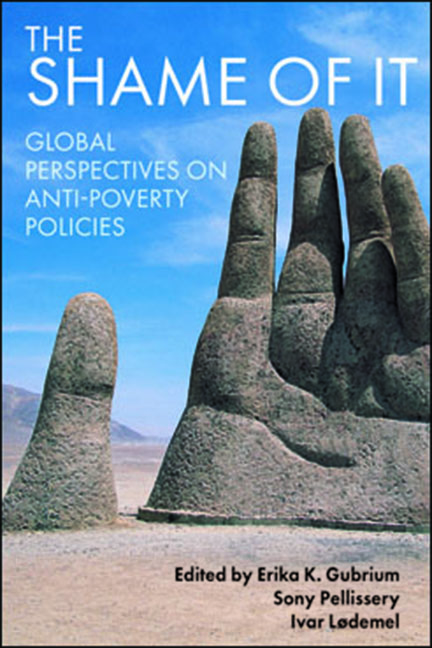Book contents
- Frontmatter
- Dedication
- Contents
- Notes on contributors
- Acknowledgements
- Preface
- one Resetting the stage
- two New urban poverty and new welfare provision: China’s dibao system
- three Thick poverty, thicker society and thin state: policy spaces for human dignity in India
- four Self-sufficiency, social assistance and the shaming of poverty in South Korea
- five ‘Not good enough’: social assistance and shaming in Norway
- six Pakistan: a journey of poverty-induced shame
- seven Separating the sheep from the goats: tackling poverty in Britain for over four centuries
- eight ‘Food that cannot be eaten’: the shame of Uganda’s anti-poverty policies
- nine Shame and shaming in policy processes
- ten Towards global principles for dignity-based anti-poverty policies
- Index
two - New urban poverty and new welfare provision: China’s dibao system
Published online by Cambridge University Press: 03 February 2022
- Frontmatter
- Dedication
- Contents
- Notes on contributors
- Acknowledgements
- Preface
- one Resetting the stage
- two New urban poverty and new welfare provision: China’s dibao system
- three Thick poverty, thicker society and thin state: policy spaces for human dignity in India
- four Self-sufficiency, social assistance and the shaming of poverty in South Korea
- five ‘Not good enough’: social assistance and shaming in Norway
- six Pakistan: a journey of poverty-induced shame
- seven Separating the sheep from the goats: tackling poverty in Britain for over four centuries
- eight ‘Food that cannot be eaten’: the shame of Uganda’s anti-poverty policies
- nine Shame and shaming in policy processes
- ten Towards global principles for dignity-based anti-poverty policies
- Index
Summary
Background
As the most populous country and carrying the oldest continuous civilisation, China has undergone drastic political and social changes in modern times. Its dynastic system that had lasted centuries was ended and replaced by the Republic in 1911, ending the Imperial rule of over 2,000 years. Following a series of civil wars, the Sino-Japanese War and revolution, the country regained peace and unity as the Communist Party established the People's Republic in 1949. For the past six decades, the development of the Chinese economy can broadly be divided into two phases: the planned economy or socialist period until 1979, and the market economy or post-reform period from 1979 to the present time.
Throughout Chinese history and until the late 1970s, subsistence poverty was a regular and severe problem for its vast population. However, China began to adopt reform and open-door policies in the late 1970s. With the end of the commune and new permission for private entrepreneurship, productivity increased and the poverty problem was quickly improved. China has long had a dual rural–urban system. This duality is not only marked in differing modes of production and degrees of modernity, but rural and urban areas are also separated by institutional mechanisms in such a way that urbanites have enjoyed and still enjoy more elaborate social benefits provided by the state in the areas of education, medical care and pension provision, among others. Rural residents, on the other hand, have been presumed self-supportive in all respects (Hussain, 1994). Poverty alleviation programmes primarily targeted at the rural population and launched in the mid-1980s by the Chinese government, however, had the strong support of international organisations and resulted in impressive accomplishments. Measured according to The World Bank standard, China's poverty reduction performance has been even more striking. Between 1981 and 2004, the fraction of the population below this poverty line fell from 65 to 10 per cent, and the absolute number of poor fell from 652 million to 135 million, a decline of over half a billion people (The World Bank, 2009). Migration to urban areas has also helped to reduce poverty in rural areas (Ravallion and Chen, 2007).
- Type
- Chapter
- Information
- The Shame of ItGlobal Perspectives on Anti-Poverty Policies, pp. 17 - 36Publisher: Bristol University PressPrint publication year: 2013



